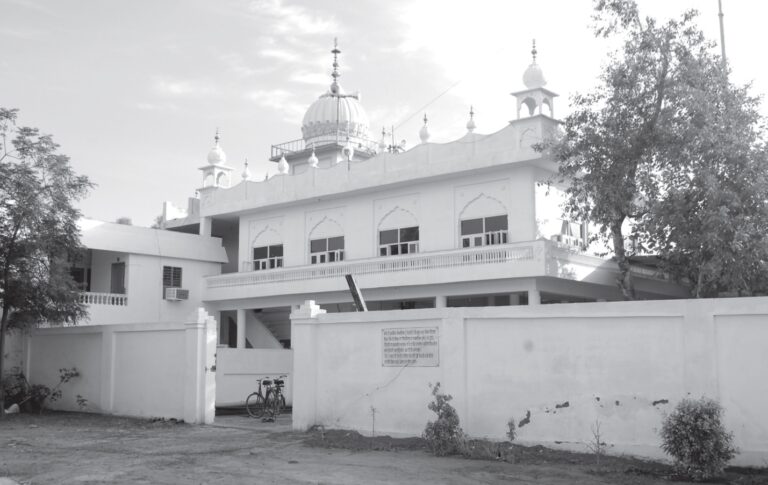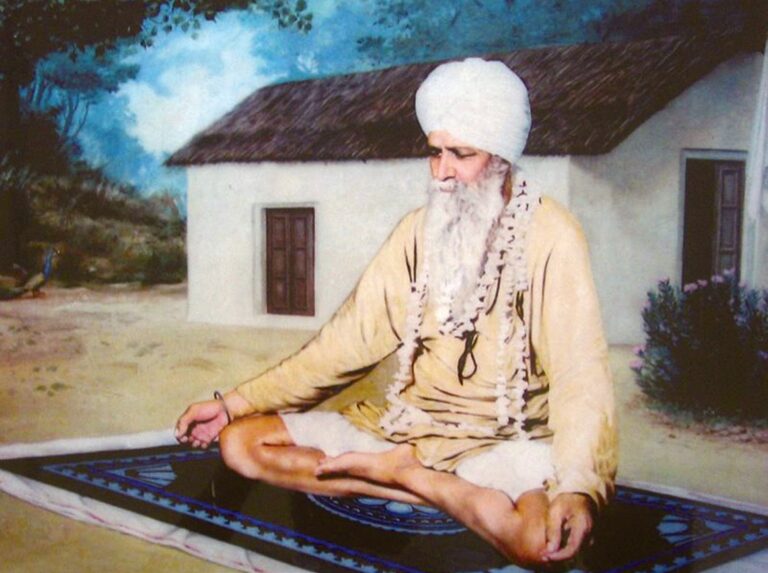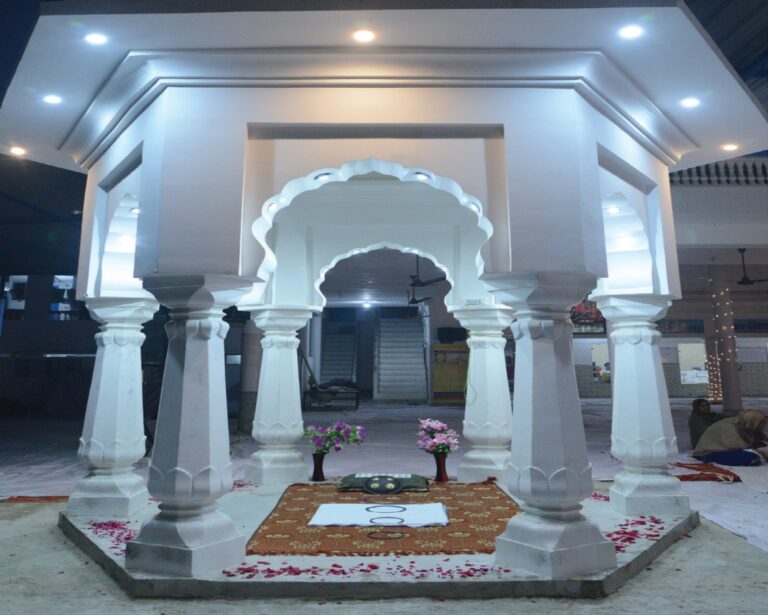History of Sewewala Sahib
On rare occasions, the hidden jewels of history reveal themselves and great discoveries are made, inspiring future generations to connect to their roots. One such discovery is Gurdwara Sewewala Sahib, which has remained relatively unknown until recent times. Sewewala Sahib resides in the village of Gumti Khurd, Faridkot, in the beautiful land of Punjab. This asthan (holy land) has been visited and blessed by countless saints in history. Even the tenth Sikh Guru, the light of God themselves, Sri Guru Gobind Singh Ji and their wife Mata Sahib Kaur Ji stayed here (as told by the saints Baba Trilochan Das Ji, Baba Jawala Singh Ji (Harkhowal Wale), Baba Ajit Singh Ji (Hansali Wale) and Beeba Nihal Kaur Ji)
After leaving the battlefield of Chamkaur (in 1704) and spiritually liberating the Chali Mukte (Forty Liberated Ones) at Mukatsar, Sri Guru Gobind Singh Ji reached the blessed land of Sabho ki Talwandi (now known as Takhat Sri Damdama Sahib, one of the five forts of the Sikh nation).


Here, Guru Sahib completed the writings of the universal and eternal Sri Guru Granth Sahib Ji written by their father (the ninth Guru, Sri Guru Tegh Bahadur Sahib Ji).
On the journey from Mukatsar to Sabho ki Talwandi, Guru Sahib rested at a number of villages and cities; many of these have now become shrines and a testament to Guru Sahib’s miracles. One such location was a sandhill where Gurdwara Sewewala Sahib now stands. Guru Sahib stayed here with their entourage of 23 warriors, performing discourses for 17 days. The sangat (congregation) were blessed with the divine knowledge of Sri Chaupai Sahib, one of the Guru’s own writings and an integral part of the daily Sikh prayers.
This divine knowledge was revealed by Sant Baba Jawala Singh Ji (Harkhowal Vale) and Brahmgyani Beeba Nihal Kaur Ji (Sewewala Sahib) themselves.
After Guru Sahib’s visit, this holy place was visited and blessed by many great saints. In 1820, a Nirmalay Mahapursh (great spiritual being) called Baba Trilochan Das Ji also arrived here. Baba Ji spent time here doing bhagti (devotional worship), meditating on Mool Mantar, the opening verse of Sri Guru Granth Sahib Ji. He was joined in 1850 by another Mahapursh called Baba Prakasha Chand Ji, a saint who knew people’s innermost thoughts due to his immense spiritual state. Both saints stayed together and did a great amount of bhagti. The village of Sewewala was officially founded in 1860 and originally named Gumti Khurd. In 1875, Baba Trilochan Das Ji left his physical body,while Baba Prakasha Chand Ji continued to do deep meditation.
In 1910 another pious saint, Baba Asa Ram Ji, arrived from the village of Kot-Shamir, near Damdama Sahib. Originally from an Aggarwal family, he later became Baba Asa Singh Ji, after receiving the boon of Amrit and being officially initiated into the Khalsa (Sikh nation). Within months of Baba Asa Singh Ji’s arrival at Sewewala Sahib, Baba Prakasha Chand Ji passed away. Baba Asa Singh Ji remained at this asthan and did much spiritual contemplation. He also laid the foundation stone of the Gurdwara as it stands today, including a room for Sri Guru Granth Sahib Ji. Baba Ji lived for roughly 100 years, before returning to the Almighty in 1947.
All of this spiritual power bestowed upon this pure land had set the stage for the arrival of a truly great soul.

